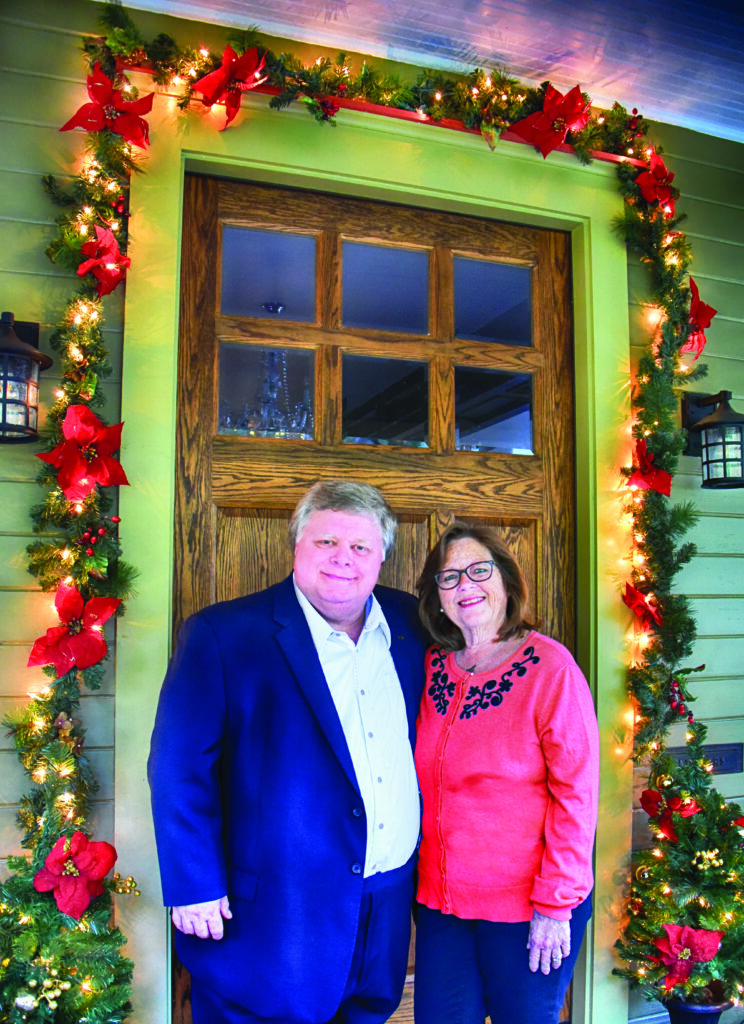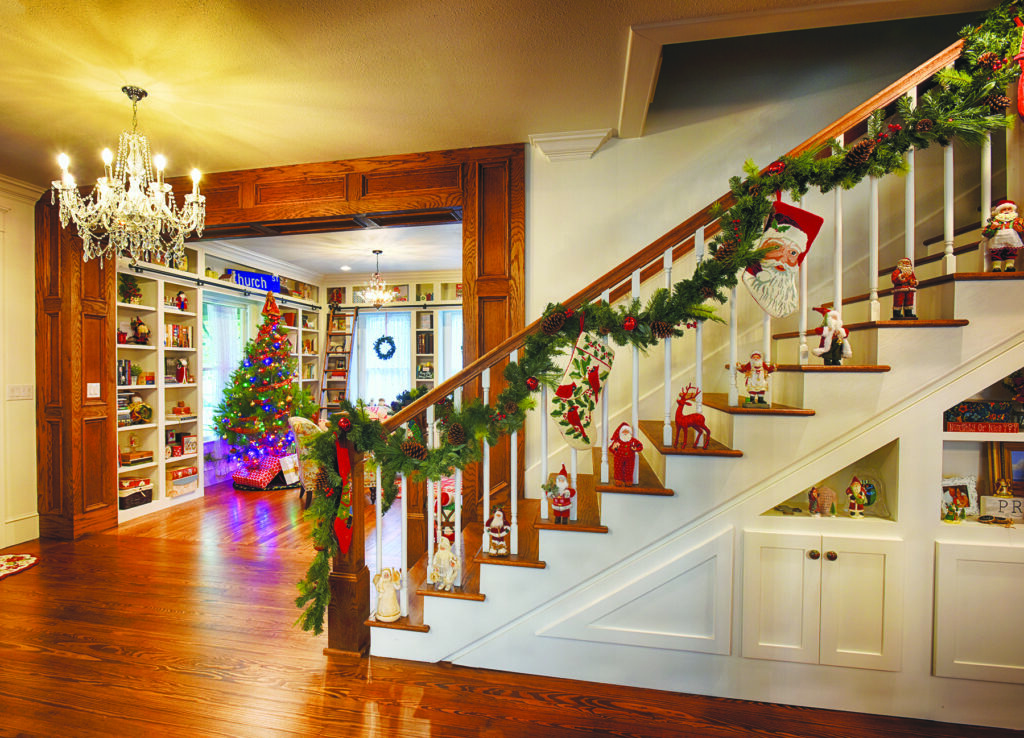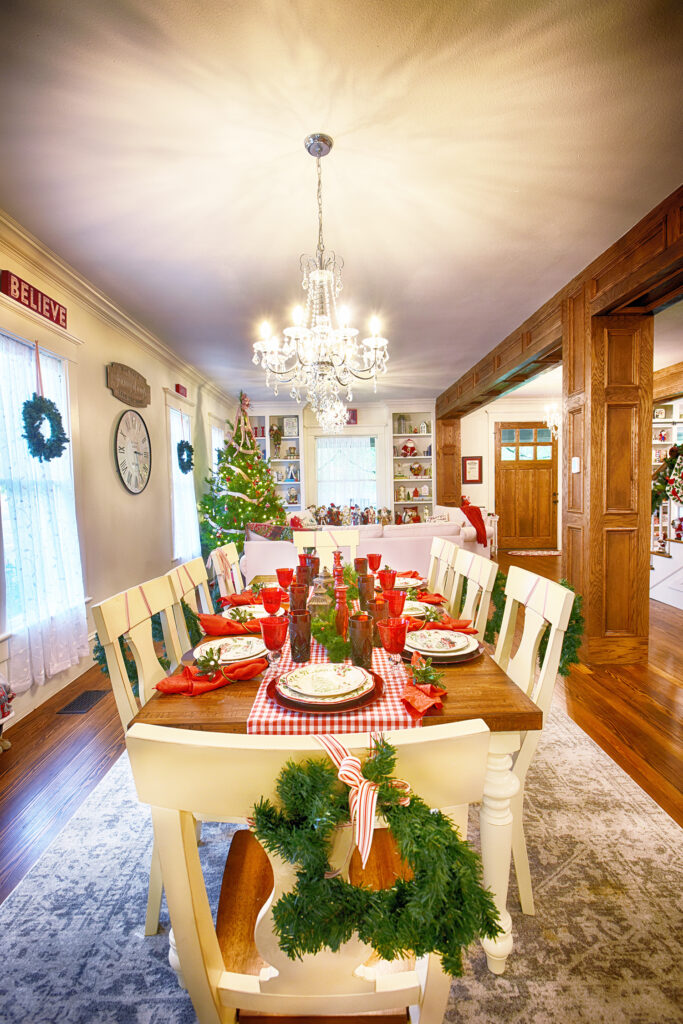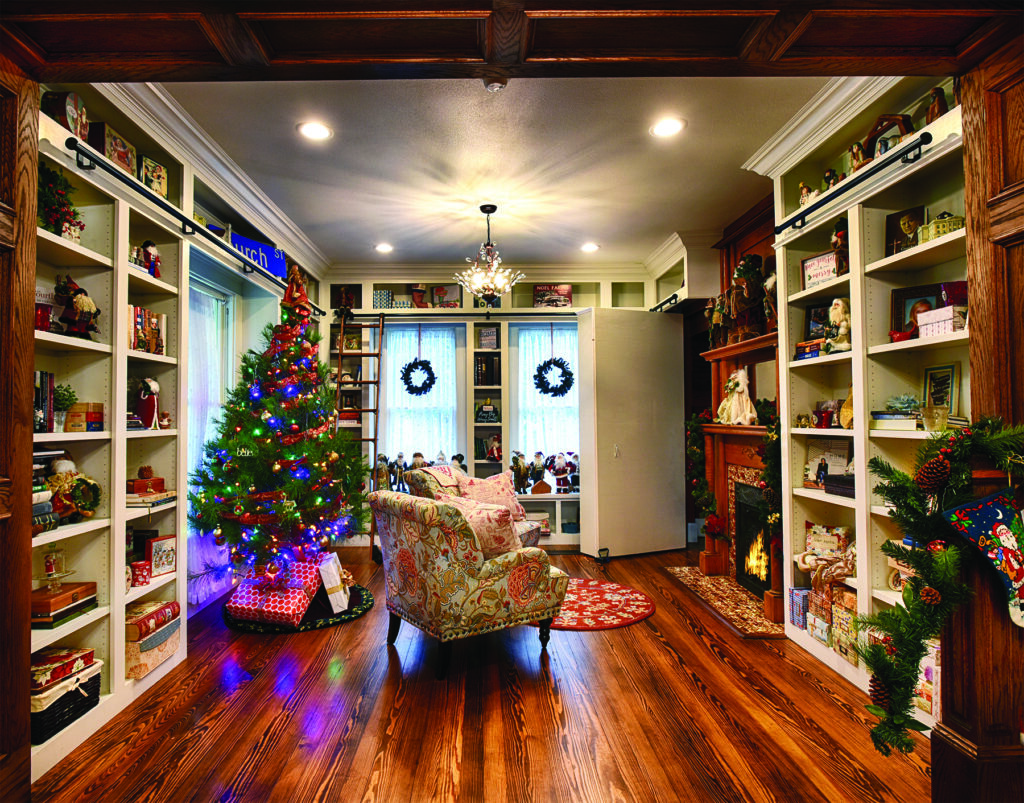
Historic homes and buildings provide cultural experiences, and create benefits for leisure and tourism. The benefits are not always about the property value, but in their impact on the community.
Mayor Dale and Mickie Ross Treat readers to A Photo tour of their old-town home. Built in 1913, it is not only a beautiful restoration, but also a great example of weaving the past and the present into a comfortable space for long into the future.
History
The Ross’ home on Church Street was built in 1913 for the Carlson family, who were ready to retire and move into town. The heirs sold the home in the 1940s and the new owners added a second floor, including a living room, bath and kitchen. Typical of the time, the ceilings were just 7’ high, and plenty of space was allotted for an upstairs porch.

The Ross’ home was built in 1913
The first landowner, a Kentucky immigrant named Stubblefield, owned it for a single day. He volunteered in the Texas Revolution and the state awarded him land for payment.
When Dale and Mickie bought the home in 2004, they realized Mickie’s dream of living in an old house. Dale recalls, “We had to lock her in the attic when dealing with the realtor because she would have paid anything to live here. But I agreed to it because it has a perfect yard.” Mickie says, “We looked at new homes that cost the same, but you can’t buy history, and, for me, it’s all about being authentic. In our first year, a car pulled up with an elderly lady and her granddaughter. Turned out, she was a Carlson, and our house once belonged to her grandmother. She wanted her granddaughter to see it. They visited often and I was thrilled to learn more about their family, which paralleled some of the history of Georgetown.”
In 2019, after a year-long renovation, the home is now a showplace that blends historic charm with spaces that reflect a modern lifestyle without compromising ambiance. And it is still just a ten-minute walk to downtown and everything inviting at our beautiful town square.
Changes for the Better
Changes to the home were, literally, dreamed into reality by Green Earth Builders’ John Lawton. He says his process includes visiting with homeowners to get a feel for their personality and what they want their home to be. “I sleep on it and usually dream about what the home will look like. When I wake up, I sketch those ideas and present them to the clients.“

John added an interior staircase (previous page) and converted the upstairs apartment into the master bedroom, having rebuilt the low ceilings into vaulted architecture to brighten the rooms (cover photo). “Most older homes had smaller rooms that felt bigger thanks to high ceilings. My vision is to open them up and adapt the space to modern lifestyles without sacrificing traditional craftsmanship and character.“ He explains, in early-to-mid 20th century homes, small rooms were adequate because families spent time outside or on porches. Today, kids don’t spend long hours roaming independently, so they need larger, open spaces in the home for play; and social visits are kitchen-heavy.
John says, “People have adapted to a certain style of living and there are many ways to make old houses fit that. Many times we pull something up and owners are thrilled to see longleaf pine or beadboard and we make every effort to keep those intact, even as we’re knocking out a wall or adding a secret door to a new closet. We try to stay with as much of the original home as possible.”
In the Ross home, John removed walls to create space for entertaining—visitors can see the back door from the front door—but kept the interior columns and covered them with raised panel to complete the look.

Upstairs, he created motorized insets for modern things like televisions, so the home has a comfortable blend of old and new. “I am pleased that people want to renovate in a way that keeps tradition present. When the client wants a large sub-zero refrigerator in an old kitchen, we adapt the look with cabinetry and ensure the new things don’t dominate the room.”

Dale adds, “Our younger generation are big fans of authenticity, and many are going back to their roots in Georgetown. All of this historic preservation and renovation is about going to back to a time when things were simpler.” Mickie agrees; “We want to continue to honor what the Carlsons would do. Back in their day, families would go to church, then walk downtown and have a picnic lunch. Many people still do that today.”
Building “New” in Old Town
Believe it or not, there are still places in the downtown area to build a new home. But, it takes a person with vision, “horsepower”, and a love of Georgetown to re-dedicate land in our historic district in ways that respect the past while embracing the future.
Chance Leigh is one such builder. He has been developing land and building quality homes since he was 18 years old, and while he does build homes elsewhere, he says historic district homes—called infills—are his vanity projects. “There are 60 builders in Georgetown, and they are all great with one-acre lots and creative builds. But zoom in, to the downtown area, and you realize it takes effort to balance finance and time with compliance and design rules.”
They are not making any more ‘downtown’. Every home is unique in size and layout, so In order to do it right, I compare it to running a marathon.
Chance Leigh

Chance navigates the process himself; finds out who owns the land, sends a handwritten letter, and closes the deal himself. He talks to neighbors and usually doesn’t break ground for a year or more. But when it is complete and someone buys it, he says, “I get goosebumps and it has all been worth it.”
More than anything, Chance is committed to period correctness and builds homes to fit appropriately where they stand. “No one wants to stand out like a Starbucks on the Square. I build with balance; meshing the new and the old to make a new home fit in. Downtown, you are always dealing with small footprints, so it takes a little more vision and commitment to the details and appearance. If I feel like I’m not on the same page as the buyer, I will give back the check.”
When he acquires a new property, he personally visits with others on the block to let them know what he is building next to them. “I always want their feedback because I don’t want them to be upset once construction starts and we can’t turn back. Sometimes people just want an empty lot to stay an empty lot. I love Georgetown, I really care what the people who live there think, and I try to make them happy. ”
Chance was born and raised in Georgetown, “I don’t see anything for what it is, but more for what it can be and I’m not in this business to appease one buyer. I want to build another home, and another, and feel welcome to do it. I never want anything to look like an afterthought. I want downtown to be organic; not like something we picked out of a catalog and threw together.”
The Historic Perspective

Amanda Parr is a member of Georgetown’s Historic Architecture Review Committee (HARC) and lives in our historic district. She explains that “historic” homes are those more than 50 years old, and they do not necessarily conform to a specific look or design. “Historic homes tell the story of Georgetown; we see how lifestyles change over time by the types of homes we have. Much like the Victorian homes near Austin Avenue evoke a feeling of steadfastness and prosperity, mid-century homes near Hutto Road remind us of the time when most Southwestern professors lived here. Alumni still come to town and drive through the neighborhoods to reminisce.”
HARC is not about making things look old, but rather to ensure buildings follow guidelines to maintain the fabric of our neighborhoods. “We don’t want every home to be a replicate of something from 1910. We want to show progress and how Georgetown has changed through the years. Everyone wants a nice kitchen and wi-fi; our goal is to make sure that restorations simply reflect the time period for the home.”
Amanda says, “Historic preservation matters to all of us, not just those who live downtown. People are drawn to visit or move to Georgetown because of our historic overlay and our Square. They understand it is part of what makes our town unique and vibrant. In simple terms, it’s what brings people here. Who doesn’t want to live in an interesting place that remembers and values its own history?”
Amanda believes we should all appreciate appropriate development and management of our historic areas. Williamson County is a very desirable place to live, and everyone from HARC to builders to contractors know that it is up to all of us to be able to tell our story and what makes us special. “We want to appreciate the gems we have here and enhance them rather than take them away.”
